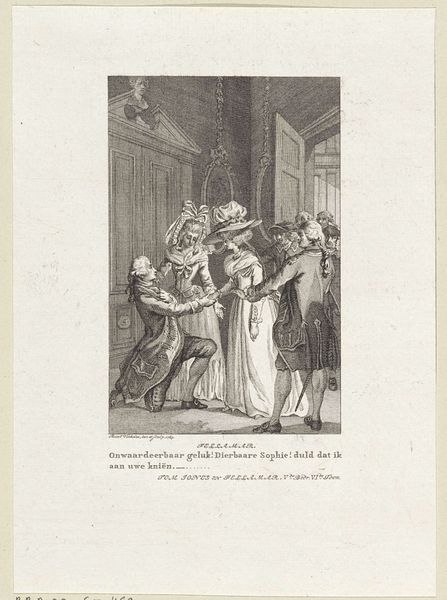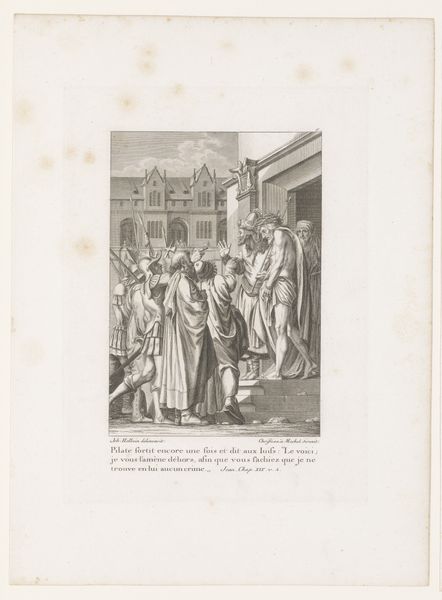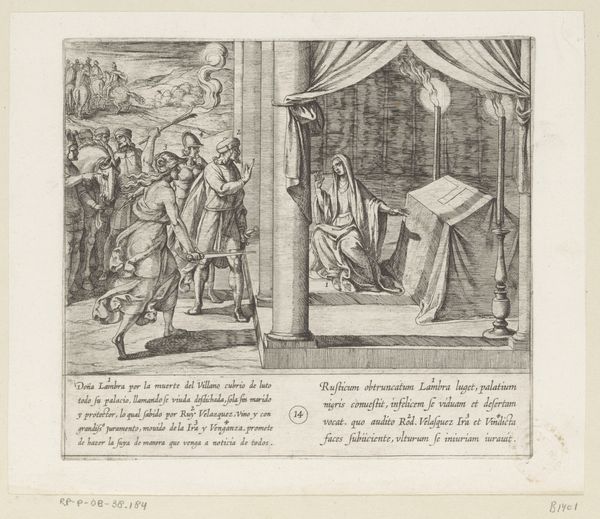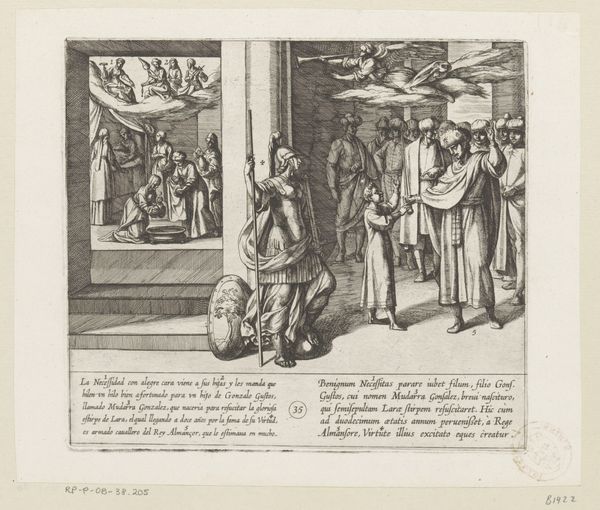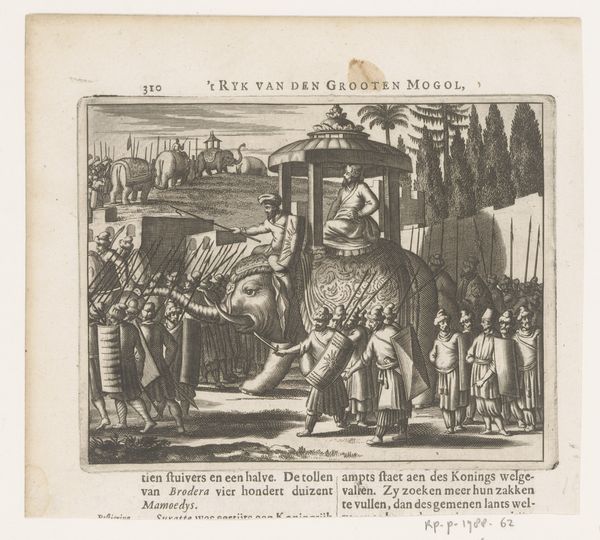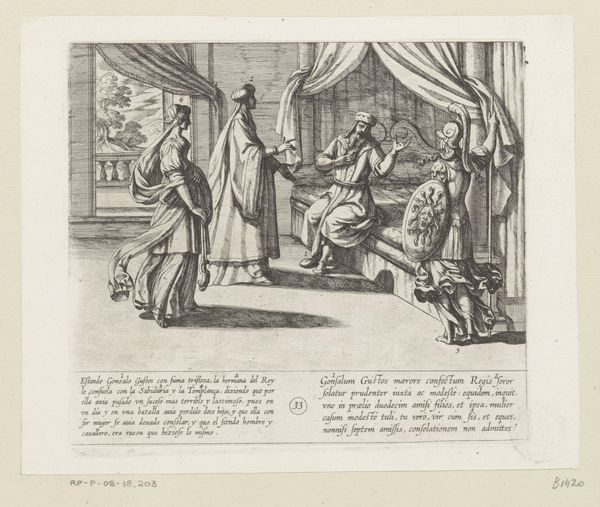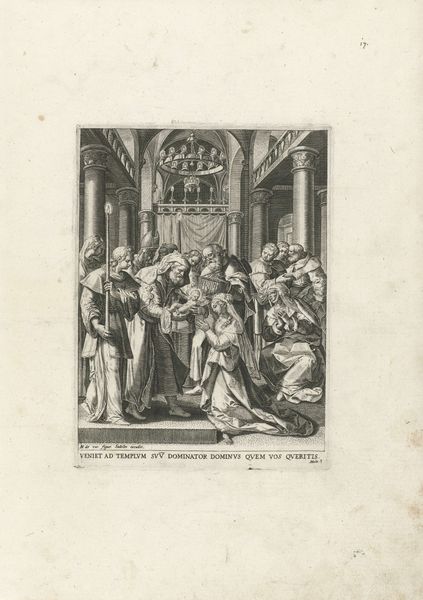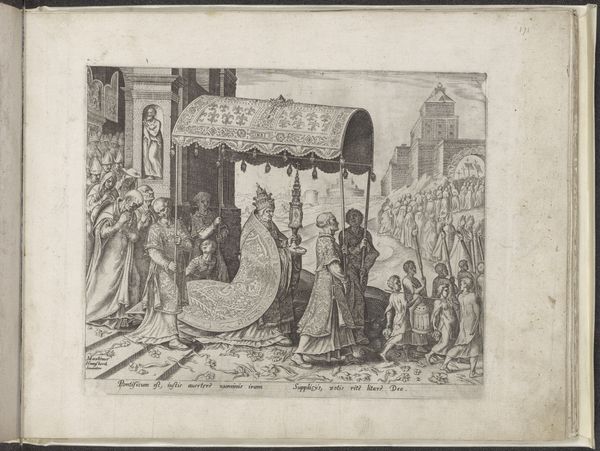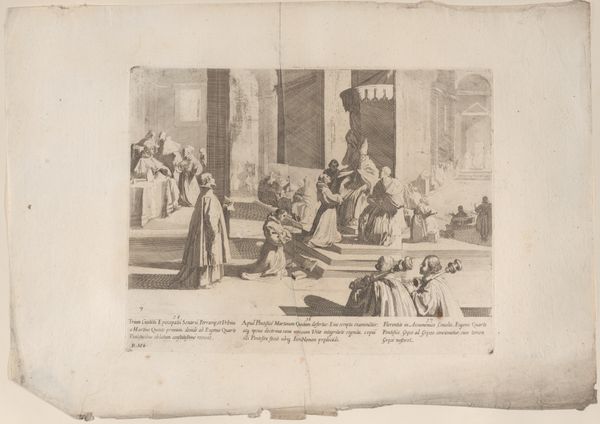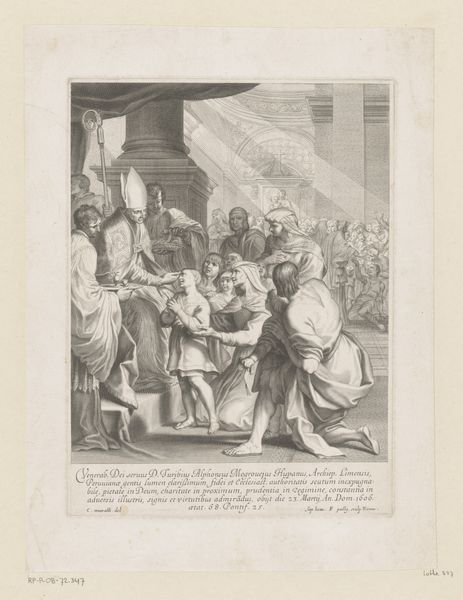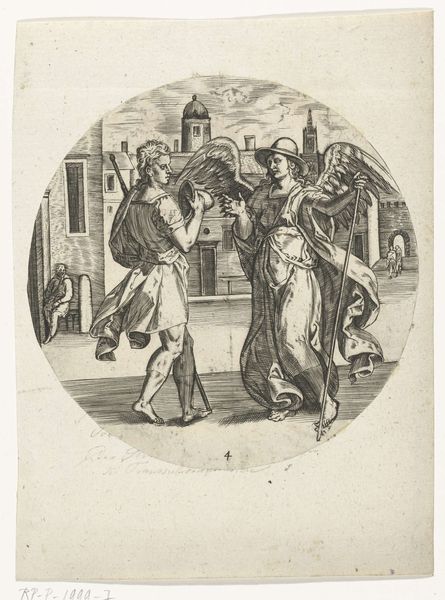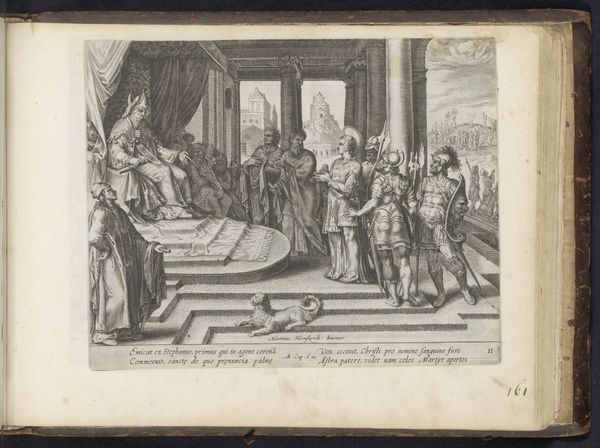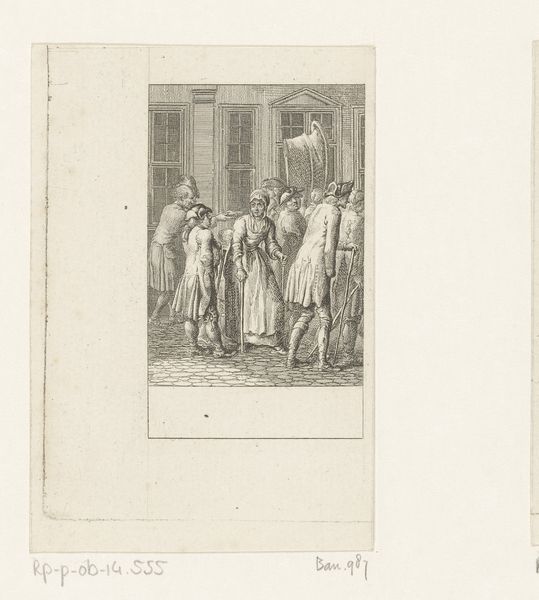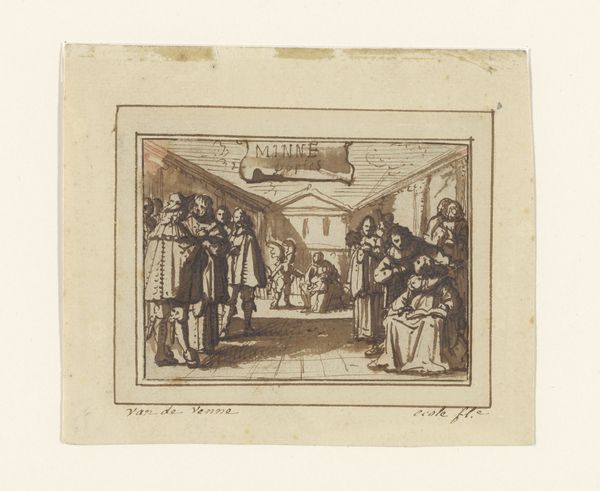
print, engraving
#
narrative-art
#
dutch-golden-age
# print
#
old engraving style
#
islamic-art
#
history-painting
#
engraving
Dimensions: height 124 mm, width 161 mm
Copyright: Rijks Museum: Open Domain
Curator: This engraving, "Huwelijksceremonie van Brahmanen" from 1672, offers a window into the Dutch Golden Age's perception of "exotic" cultures. Editor: It's fascinating how this print captures what looks like a Hindu wedding ceremony, but it feels… almost theatrical. What can we learn about cultural exchange by examining such pieces? Curator: Exactly! We have to consider the power dynamics inherent in the gaze of the colonizer. How does this image construct ideas of the "other" for a European audience? What's emphasized? What's omitted? Consider the title – Brahmins are being used as stand-in for an orientalist fantasy of India as a whole. Editor: So, the focus isn’t necessarily on accurate representation but on creating a spectacle for viewers back in the Netherlands? I notice some figures are elaborately adorned with jewelry while others aren't. Curator: Precisely. The distribution of wealth and status becomes a spectacle, potentially reinforcing preconceived notions about hierarchies and exoticism within that society. This becomes about constructing identities for an European gaze, rather than the lived realities of the figures depicted. How might the artist’s own biases and the prevailing colonial attitudes of the time have shaped this depiction? Editor: That makes me question the seemingly objective nature of historical documentation. Was the goal truly to educate, or to reinforce a sense of European superiority through this "window" into another world? Curator: A vital question! This engraving isn't just a record; it's a carefully constructed narrative steeped in the politics of the Dutch Golden Age. Understanding that helps us unpack its complex legacy. Editor: I learned so much about unpacking this, more than just accepting this artwork at face value. Curator: Yes. Thinking critically is how we reveal whose story is prioritized – or erased – by a work like this.
Comments
No comments
Be the first to comment and join the conversation on the ultimate creative platform.
